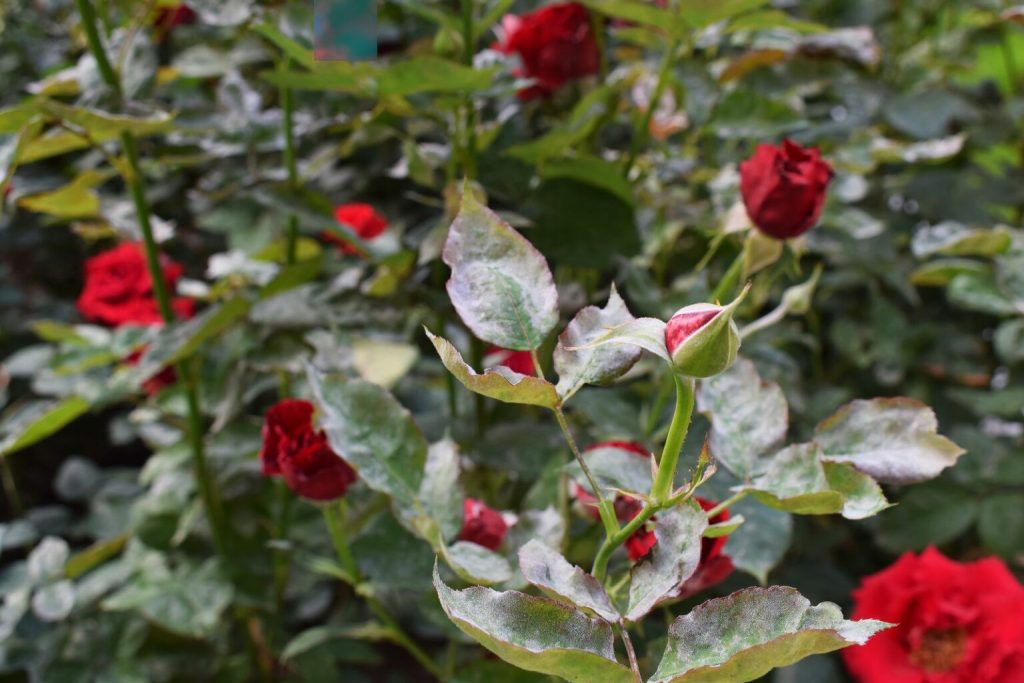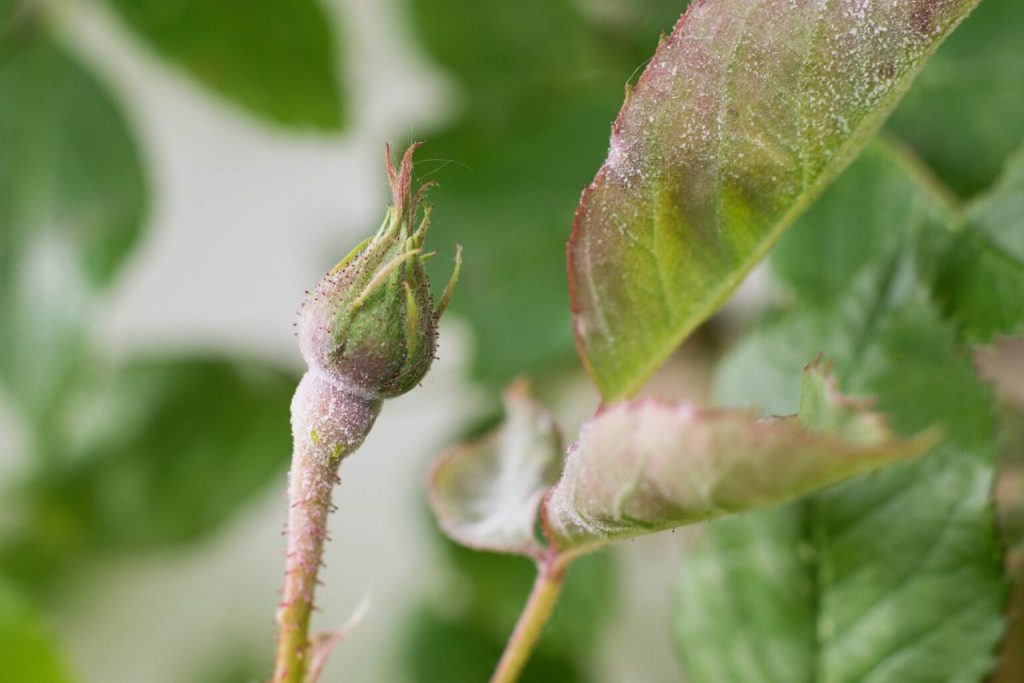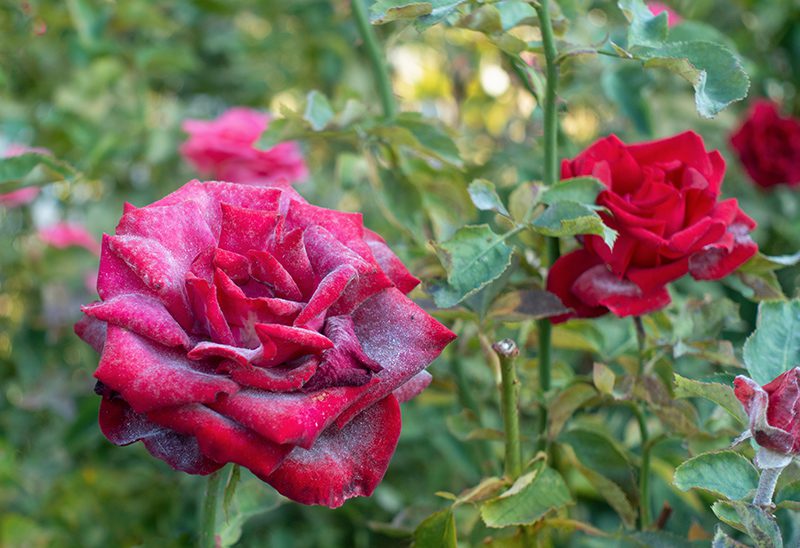
Powdery mildew is more than a nuisance. It’s a silent profit-killer in Kenya’s flower industry. While many accept it as an unavoidable challenge, it causes long-term financial and production setbacks. From stunted flower growth to increased chemical dependency, this disease is undermining the sector’s sustainability. So, are we addressing powdery mildew the right way, or is it time to rethink our strategy?
Powdery mildew (Podosphaera pannosa) thrives in high-humidity yet dry environments. It doesn’t just reduce yield; it affects flower quality, weakens plant defenses, and increases production costs. Mild infections may go unnoticed at first, but over time, they force farmers to use costly fungicides more frequently. Worse, resistant fungal strains are emerging, making control even harder.
The economic toll is significant which includes flower rejections in export markets, leading to direct financial losses. Additionally, repeated outbreaks mean increased labour costs for fungicide applications, reduced productivity, and higher expenses for alternative treatments. The cumulative effect of these factors can erode farm profitability over time, making mildew a costly diseases for growers.

Powdery mildew also has indirect effects. Weak plants are more vulnerable to secondary infections, meaning that once mildew takes hold, other fungal or bacterial diseases may follow.
This leads to a cycle where affected plants require multiple treatments, increasing overall costs.
Are We Over-Reliant on Fungicides?
Many farms combat mildew with routine fungicide sprays. Repeated use of chemicals can lead to resistance, forcing growers to switch to stronger and often more expensive solutions. More importantly, export markets are becoming stricter on chemical residue levels. A heavy-handed approach to mildew control could jeopardize market access for Kenyan flowers.
Additionally, excessive reliance on fungicides affects environmental sustainability. Overuse can disrupt beneficial microbial populations in the soil and on plant surfaces, weakening natural disease resistance. The challenge for modern cut-flower growing is finding the balance between effective disease control and long-term environmental responsibility.
Kenyan growers must also consider the regulatory landscape. European markets, a major destination for Kenyan flowers, are increasingly pushing for sustainable farming practices. The use of certain fungicides is being phased out due to environmental concerns, leaving growers with fewer options for chemical control.

This means that alternative approaches are not just advisable-they are becoming a necessity.
Strategies for Long-Term Control
Microbial Defense
Researchers continue to explore beneficial bacteria and fungi that naturally suppress powdery mildew. Trials with Bacillus subtilis and Trichoderma strains have shown promising results in strengthening plant immunity and reducing fungal spread. Implementing these biological solutions as part of an integrated pest management (IPM) strategy can reduce dependency on synthetic fungicides and enhance plant resilience over time.
Climate Control
Greenhouse conditions should be fine-tuned to minimize mildew outbreaks. Installing better ventilation systems, reducing plant overcrowding, and monitoring humidity levels can create an environment that discourages fungal growth. Advanced climate control systems that adjust temperature and humidity dynamically can provide a significant advantage in keeping mildew at bay.
Growers can also use dehumidifiers or controlled misting systems to create an environment that is unfavorable for mildew development. It is essential to maintain a balance because too much humidity favours mildew growth, while excessively dry conditions can stress plants, making them more susceptible to infections.
Breeding for Resistance
Investing in resistant cultivars may reduce chemical dependency and ensure healthier plants with longer-lasting blooms. More breeding programmes are now focusing on integrating disease resistance with high-quality bloom characteristics, making resistant varieties an attractive long-term solution for growers.
Strengthening Plant Defense
Studies show that silicon-based foliar sprays help reinforce plant cell walls, making them less susceptible to mildew attacks. Similarly, biostimulants derived from seaweed extracts can enhance a rose plant’s natural ability to fight disease. These approaches are gaining traction as cost-effective and eco-friendly methods to enhance plant immunity.
Optimizing Irrigation Practices
Some growers are also using soil moisture sensors to optimize water usage. These tools allow for more precise irrigation scheduling, ensuring that plants receive adequate water without creating excess humidity that fosters mildew growth.
Prevention over Reaction
Instead of waiting for powdery mildew to appear, growers need a proactive strategy. Integrated pest and disease management (IPM) is no longer an option-it’s a necessity. By combining biological solutions, climate control measures, and resistant varieties, the flower industry can reduce losses and maintain its competitive edge in the global market.
Furthermore, educating farm workers on early detection and rapid response can make a significant difference.
Growers should also keep accurate records of disease outbreaks, weather conditions, and treatment responses. Analyzing this data over time can help predict and prevent future outbreaks, leading to more informed decision-making and cost savings.
Powdery mildew is not just a seasonal challenge; it’s a persistent economic threat. If the industry continues relying on reactive measures, the cost of control will only escalate. Integrating scientific advancements with practical field solutions will be key to overcoming challenges
